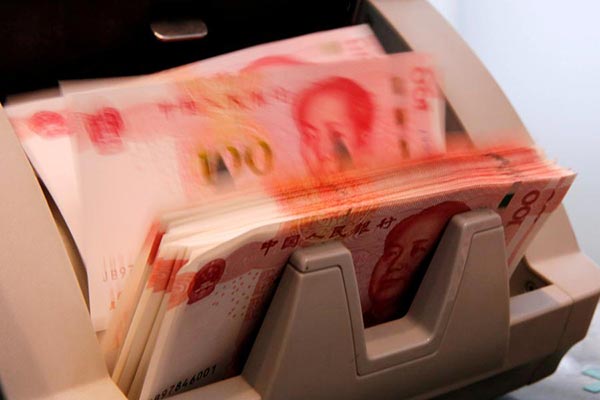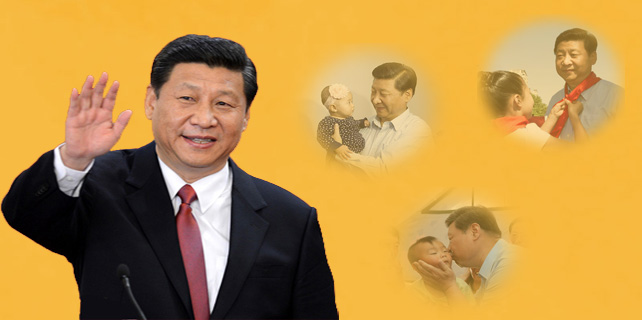RMB fine-tuning to ease selling pressure
 |
|
Chinese 100 yuan banknotes are seen in a counting machine while a clerk counts them at a branch of a commercial bank in Beijing, March 30, 2016. [Photo/Agencies] |
Bank may introduce 'counter-cyclical factor' in setting the yuan-dollar rate
The central bank's preemptive move to fine-tune the renminbi's pricing model will help ease the selling pressure facing the currency in the second half of the year, after helping push up the yuan on Thursday, analysts said.
The People's Bank of China revealed last week it was considering introducing a "counter-cyclical factor" in setting the reference rate of the yuan against the dollar. While details of the adjustment have not been disclosed, the yuan's daily fixing was set at 6.8090 on Thursday, its strongest level since November.
The overnight yuan interbank rate in Hong Kong, or HIBOR, an indicator reflecting the cost for short selling of the yuan, spiked to the highest level in six months on Thursday.
The high costs of short selling of the yuan helped boost the offshore yuan against the dollar up to 6.7240 in midday trading on Thursday.
The strong performance of the yuan means that the signal sent by the central bank has already started to take effect, and that can be sustained for a rather long period of time, according to Nomura's Hong Kong-based chief China economist Zhao Yang, referring to the central bank's move to add the counter-cyclical factor to the pricing model.
The adjustment aims to help ease the potential for "herd behavior" in the foreign exchange market, according to an online statement by the central bank last Friday.
Fielding Chen, a Bloomberg economist, said key macro variables such as GDP, inflation and PMI may be included, to reflect the situation of the economy.
That said, the message sent to the market itself matters more than the composition of the factor, according to Zhao.
"It sounds to me that the PBOC prefers having more influence over the yuan's exchange rate at this stage," he said.
The yuan does not face much near-term pressure to depreciate, at a time when the dollar has not shown much momentum, despite the Fed signaling that an interest rate hike may come soon in its minutes released in May.
The current timing-with the yuan performing relatively well-is ideal for the central bank to increase its influence in managing the exchange rate, according to Chetan Ahya, an Asia-Pacific economist at Morgan Stanley.
He said the preemptive move will help the PBOC ease the pressures ahead.
Major pressure comes from the Federal Reserve's plan to reduce its balance sheet and a seasonal higher pressure for capital outflows at year-end, according to Wang Youxin, an economist with the research institute of Bank of China.
Wang said more adjustments are expected if the central bank finds it necessary to improve the model to make it more market-oriented.
The adjustment to the pricing model is the fourth change since Beijing decided to adopt a market-based midpoint rate determination mechanism with reference to major currencies on August 2011.
"Attempts made so far only improved the model in terms of the accuracy reflecting market fluctuations," said Wang. "The yuan's prospects mainly lie in economic fundamentals, not the pricing scheme of the currency."
- China not manipulator of RMB exchange rate: MOC
- Belt and Road to tap local currencies, says PBOC's deputy governor
- First renminbi-denominated bond well received in Africa
- IMF issues world's RMB-identified forex reserves for first time
- Morgan Stanley bullish on China's bond market
- Hungarian RMB market growing successfully: Central bank official
















